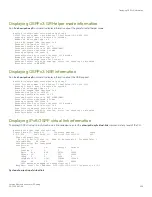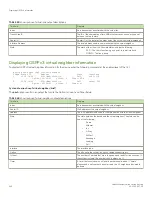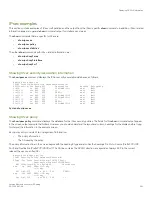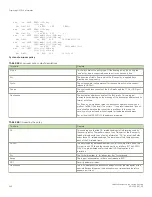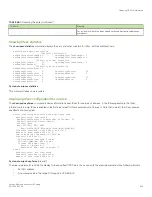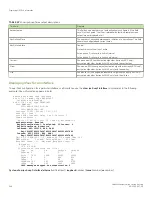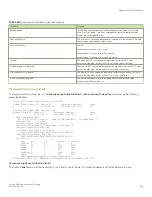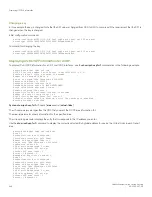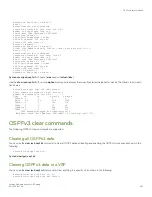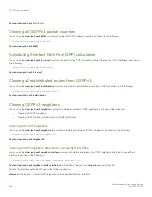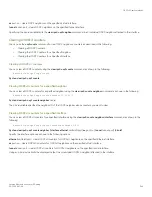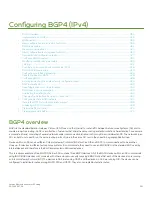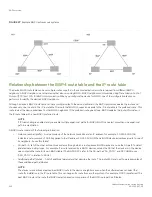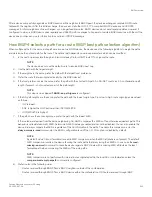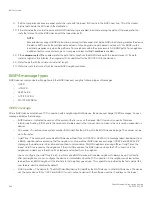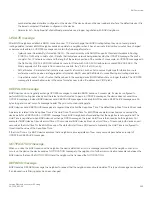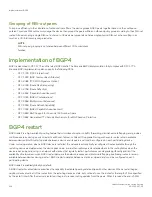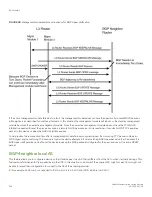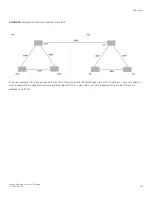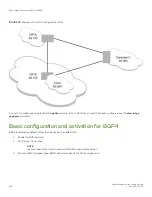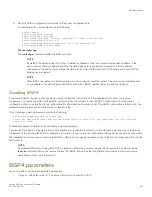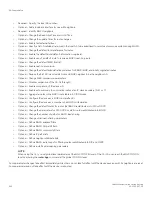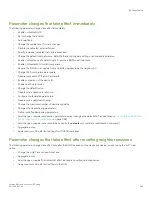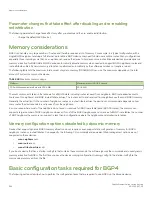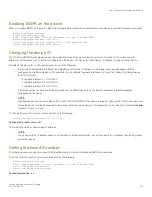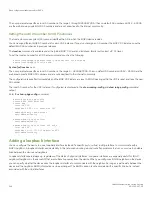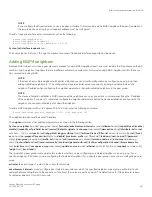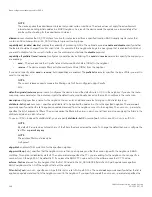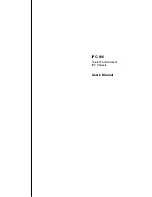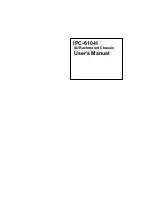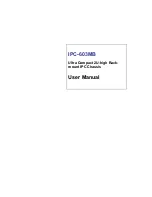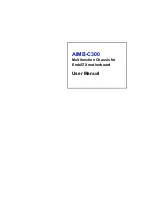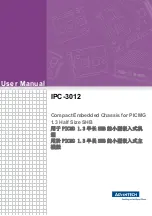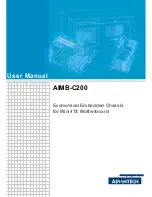
After a device successfully negotiates a BGP4 session with a neighbor (a BGP4 peer), the device exchanges complete BGP4 route
tables with the neighbor. After this initial exchange, the device and all other RFC 1771-compliant BGP4 devices send UPDATE
messages to inform neighbors of new, changed, or no longer feasible routes. BGP4 devices do not send regular updates. However, if
configured to do so, a BGP4 device does regularly send KEEPALIVE messages to its peers to maintain BGP4 sessions with them if the
device does not have any route information to send in an UPDATE message.
How BGP4 selects a path for a route (BGP best path selection algorithm)
When multiple paths for the same route prefix are known to a BGP4 device, the device uses the following algorithm to weigh the paths
and determine the optimal path for the route. The optimal path depends on various parameters, which can be modified.
1. Is the next hop accessible through an Interior Gateway Protocol (IGP) route? If not, ignore the route.
NOTE
The device does not use the default route to resolve BGP4 next hop.
2. Use the path with the largest weight.
3. If the weights are the same, prefer the path with the largest local preference.
4. Prefer the route that was originated locally (by this BGP4 device).
5. If the local preferences are the same, prefer the path with the shortest AS-path. An AS-SET counts as 1. A confederation path
length, if present, is not counted as part of the path length.
NOTE
This step can be skipped if
BGP4-as-path-ignore
is configured.
6. If the AS-path lengths are the same, prefer the path with the lowest origin type. From low to high, route origin types are valued
as follows:
•
IGP is lowest.
•
EGP is higher than IGP but lower than INCOMPLETE.
•
INCOMPLETE is highest.
7. If the paths have the same origin type, prefer the path with the lowest MED.
If the routes were learned from the same neighboring AS, BGP4 compares the MEDs of two otherwise equivalent paths. This
behavior is called deterministic MED. Deterministic MED is always enabled and cannot be disabled. You can also enable the
device to always compare the MEDs, regardless of the AS information in the paths. To enable this comparison, enter the
always-compare-med
command at the BGP4 configuration level of the CLI. This option is disabled by default.
NOTE
By default, value 0 (most favorable) is used in MED comparison when the MED attribute is not present. The default
MED comparison results in the device favoring the route paths that are missing their MEDs. You can use the
med-
missing-as-worst
command to make the device regard a BGP4 route with a missing MED attribute as the least
favorable path, when comparing the MEDs of the route paths.
NOTE
MED comparison is not performed for internal routes originated within the local AS or confederation unless the
compare-med-empty-aspath
command is configured.
8. Prefer routes in the following order:
•
Routes received through EBGP from a BGP4 neighbor outside of the confederation
•
Routes received through EBGP from a BGP4 device within the confederation OR Routes received through IBGP.
BGP4 overview
FastIron Ethernet Switch Layer 3 Routing
53-1003627-04
353
Summary of Contents for FastIron SX 1600
Page 2: ...FastIron Ethernet Switch Layer 3 Routing 2 53 1003627 04 ...
Page 16: ...FastIron Ethernet Switch Layer 3 Routing 16 53 1003627 04 ...
Page 20: ...FastIron Ethernet Switch Layer 3 Routing 20 53 1003627 04 ...
Page 142: ...FastIron Ethernet Switch Layer 3 Routing 142 53 1003627 04 ...
Page 150: ...FastIron Ethernet Switch Layer 3 Routing 150 53 1003627 04 ...
Page 200: ...FastIron Ethernet Switch Layer 3 Routing 200 53 1003627 04 ...
Page 214: ...FastIron Ethernet Switch Layer 3 Routing 214 53 1003627 04 ...
Page 350: ...FastIron Ethernet Switch Layer 3 Routing 350 53 1003627 04 ...
Page 476: ...FastIron Ethernet Switch Layer 3 Routing 476 53 1003627 04 ...
Page 588: ...FastIron Ethernet Switch Layer 3 Routing 588 53 1003627 04 ...

